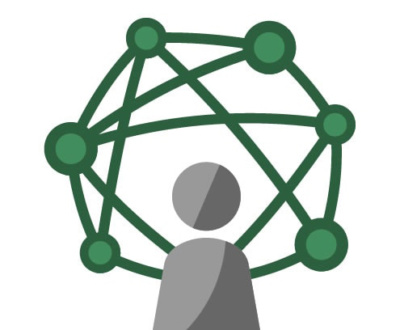Avoid Cross-Posting to Facebook and Twitter? Nonsense.
- May 4, 2017
- Content Marketing, Social Media
As a casual Google search will tell you, the web is rife with breathless advice about why we should avoid posting the same content to multiple social networking sites.
Even the fair-minded of these articles, outlining the pros and cons to doing so, seem to gloss over or entirely miss critical points in this topic.
So today we are going to gloss over the “pros” (I’ll list them, but they should be mostly self evident), and then we are going to pick apart the most common “cons” outlined, to see if we can’t get a more nuanced policy on social network cross-posting. For even more help with social media, check out our social marketing page!
The Pros
– Consistent content creation is hard. It’s great to reuse your hard work in multiple channels
– It ensures every follower, regardless of social network, is getting your new message or new article.
– Branding consistency – since brand-building is part of what we are doing in social media, much content will have value in multiple viewing outlets.
Now let’s explode a list of the cons, or at least build a clearer picture of why cross-posting can be detrimental:
The Cons
1. Platform-specific features make some messages confusing – don’t use hashtags on Facebook!
Back in the late-aughts, as Twitter and Facebook were both erupting, we started to see the first cross-platform messaging. You could tell because people appeared to be tweeting on their Facebook feed, or addressing people with @name – another Twitter feature – which often led to confusing results. Two things have happened since then: Facebook added essentially the same @addressing and #tagging functionality that Twitter used, making all of these elements in messages suddenly work just fine and even carry significance in Facebook. The second thing that happened was that most automation applications for scheduling and reusing your post across multiple social networks got smarter and let you customize the message per network. If I know a person doesn’t have the same “handle” on Facebook and Twitter, these posts can indeed still cause an issue, but with a minute of checking, I’m able to tweak the message, so it pops with platform-specific messaging and elements if needed
2. You’ll lose information in your Facebook posts on Twitter!
Maybe. Here again, modern scheduling software such as CoSchedule will show you how your message will look on each network to which you choose to publish. We’ve actually found better engagement on Facebook when we shortened up our text to Twitter-length in our updates! We are mostly aggregating great content for our followers and linking to our own articles when they are published, so we enjoy the challenge of condensing our teaser to 140 characters. In short, with a bit of planning, it’s trivial to ensure your message is optimized for each platform without recreating the wheel for each post.
3. Google hates duplicate content!
No argument here, but we aren’t talking about duplicate content the same way when we are talking about Google’s algorithm and preferences. They don’t want us building websites with 1000 nearly identical pages, but with a few keywords changed. That kind of garbage is hopefully a thing of the past and something most webmasters simply don’t do anymore. But would Google have an interest in penalizing someone for posting the same content to, say, Twitter, Facebook, Linked In and Google+?Maybe. Specifically, the volume of content you create, that you publish across social channels can play a role here. Are you making duplicate posts once an hour, all week long, week after week?
This still isn’t likely to cost you any domain authority. It’s not likely to help a great deal either, so we have to go back to the original reason we write content: to engage users! If you have different followers on different networks and they all engage with your company and your content, that turns into the real authority that search engines are picking up.
So don’t publish to 4 networks just to have 4 networks to which you are publishing. Publish to 4 networks because you’ve built or are trying to build a robust following in each. Study how each platform is different, and you will see natural reasons why you likely won’t be posting the exact same content to each.
4. Perceived as lazy
This one seems like most of the expert articles I’ve read were running out of “cons” to list and so they invent a problem of perception where there may be none. Most consumers of content are pretty savvy at this point. Do you think a follower of yours will react with shock and dismay to find the same post on Facebook and Twitter? Doubtful. They are more likely to understand the prudence of consistency, and the sustainability of “writing once, publishing many”, the so-called COPE model that has more-or-less been a goal of content organizations since the web became a thing.
In other words, people aren’t idiots. We don’t react to content reuse the same way we react to, say, failing to respond to comments from actual, engaged followers. (Ugh! Don’t do this!)
Hopefully by thinking through the “common wisdom” so prevalent in blogs and forums, we can see where a shotgun approach doesn’t work very well when giving this kind of advice, just like it often doesn’t work very well in social media generally.
Our content is precious and is meant to be read.
Most of us have good reasons why we would post the best of our work across multiple channels. Don’t be frightened away from doing so by the common group-think on this topic. While a machine-like churn of constant, hourly, duplicate content across social networks is not a great idea, how many of us are doing that?
Instead, how many of us put real TLC into our content and want it to be seen by the most people possible?
That’s what I thought.
Don’t go changin’, my friends.
Bill lives and plays in Fort Collins, Colorado. After a fulfilling career for a Fortune 50 company, Bill founded Colorado Web Design in 2012 with a passion for creative digital solutions for business. Bill likes to manage a wide variety of projects and tasks for his clients in the digital space. The creative elements of website design, application design, and marketing are enough to keep anyone busy and engaged, but wiping the slate clean over and over at the start of new projects comes with its own challenges. "I like to start with really good client communication sessions. The rest is easy if you get started in the right way." He plays tennis, bikes, and hikes and then undoes all of that with too much delicious food and TV watching.
About Colorado Web Design
We've been building websites for Colorado businesses since 2002. We are a small team of dedicated individuals who love the challenge of each new marketing project. We live and play in northern Colorado.












